|
|
|
|
On the separation of simultaneous-source data by inversion |
 shot gathers from two sources separated by
shot gathers from two sources separated by

|
|---|
|
2s5-or-1
Figure 2. Simultaneous-source data comprising shot-records from two end-on sources (S1 and S2) over the model in Figure 1(a). In this and subsequent figures, the second dimension is offset, and the third dimension is shot position. Note that along the common-offset axis, because the shot times have been referenced to source S1, data corresponding to this source are aligned, whereas those corresponding to S2 are not aligned. |
|
|
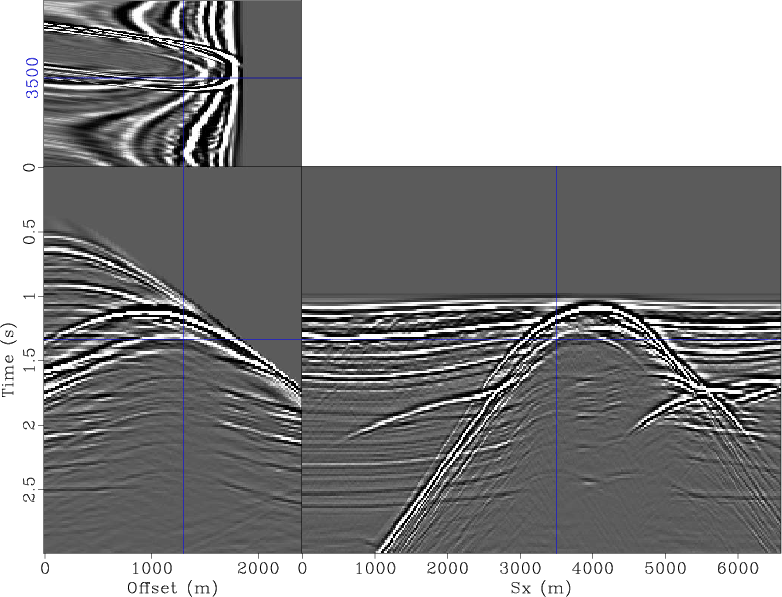
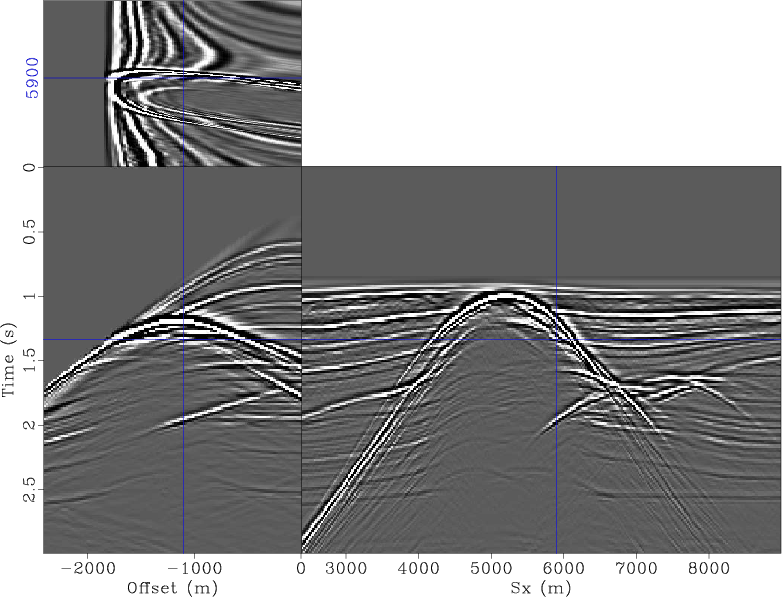
|
|---|
|
2s5-1,2s5-2
Figure 3. Single-source data that would have been recorded by (a) source 1 and (b) source 2 over the model in Figure 1(a). These two shot records are the components of the data shown in Figure 2. |
|
|
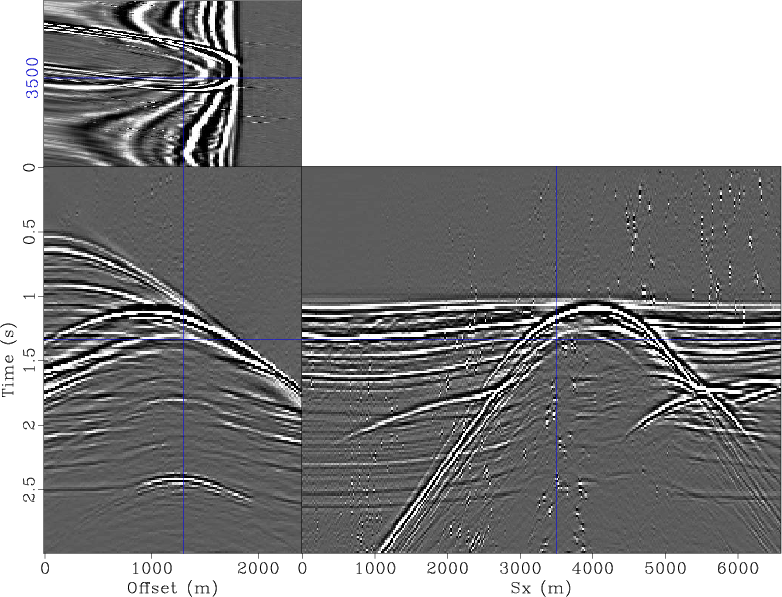

|
|---|
|
2s5-l2-1,2s5-l2-2
Figure 4. Shot gathers recovered by unconstrained |
|
|
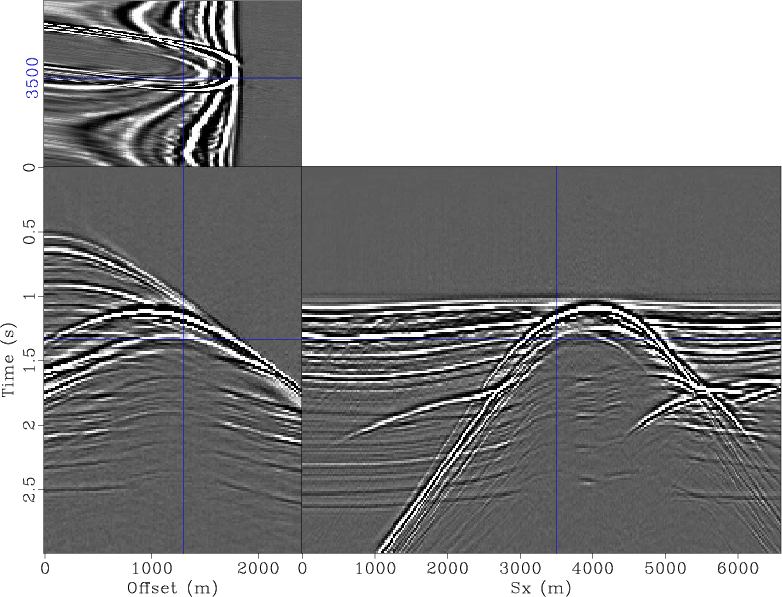
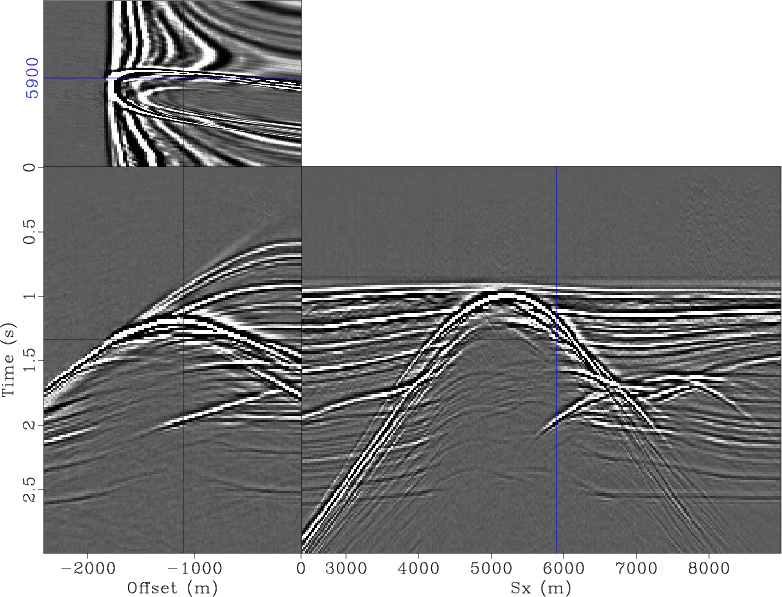
|
|---|
|
2s5-hb-1,2s5-hb-2
Figure 5. Shot gathers recovered by unconstrained sparse inversion for (a) source 1 and (b) source 2. Note that the two data sets are well separated and are comparable to the original data (Figure 3). |
|
|
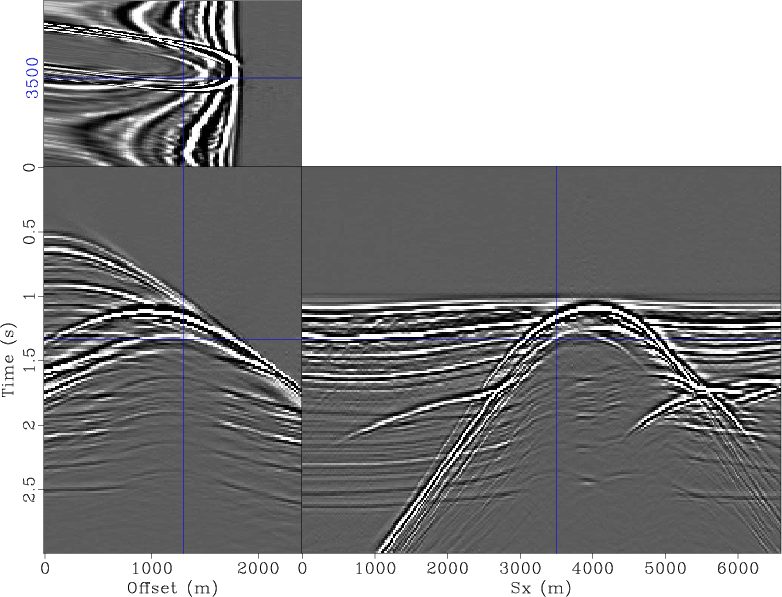
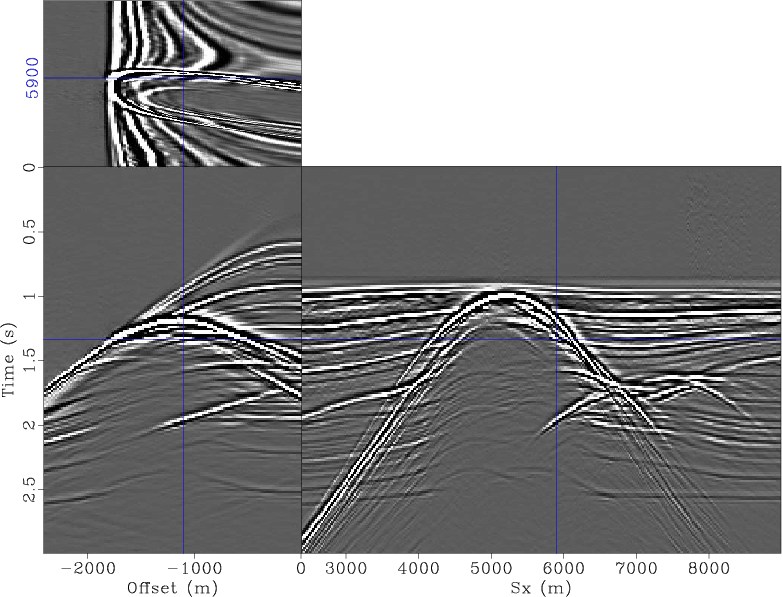
|
|---|
|
2s5-reg-1,2s5-reg-2
Figure 6. Shot gathers recovered by dip-constrained sparse inversion for (a) source 1 and (b) source 2. Note that with regularization the residual artifacts present in the unconstrained example (Figure 5) have been attenuated. |
|
|
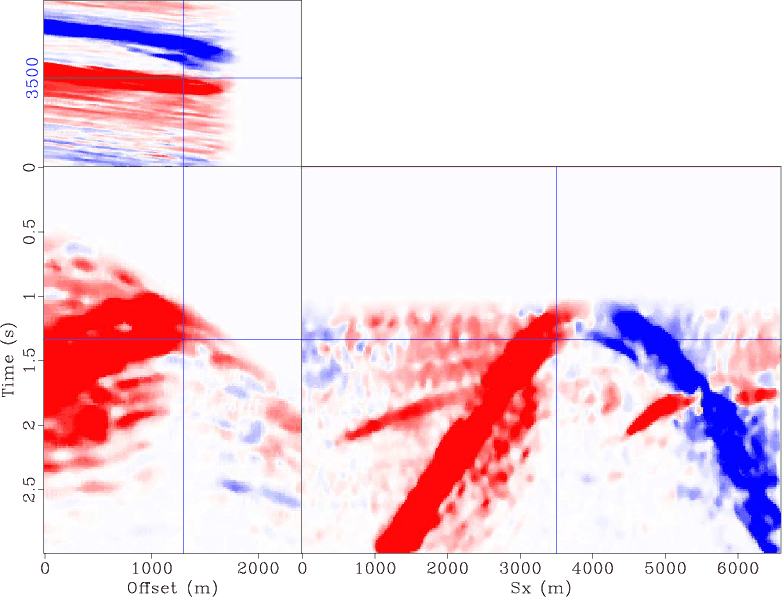
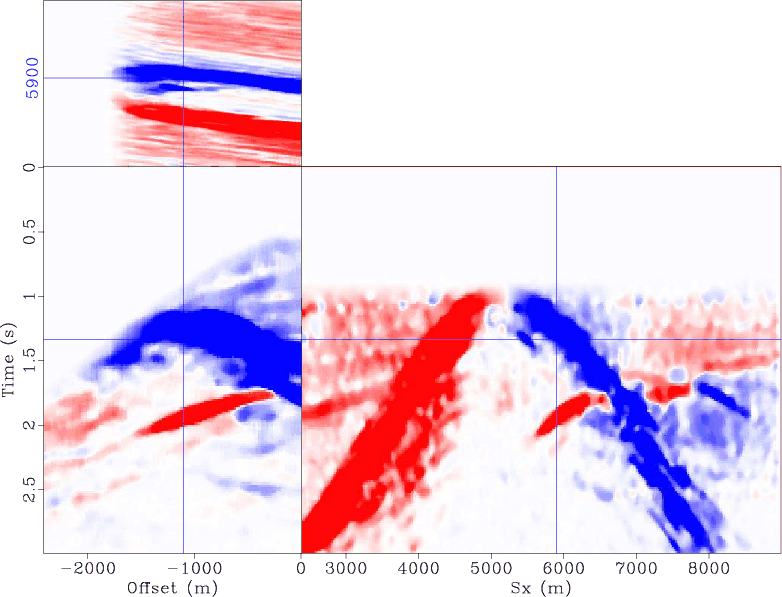
|
|---|
|
2s5-dip-1,2s5-dip-2
Figure 7. Local dips (common-offset components) for (a) source 1 and (b) source 2, obtained from the unconstrained sparse inversion (Figure 5) and used in the dip-constrained sparse inversion to obtain the results in Figure 6. |
|
|
|
|
|
|
On the separation of simultaneous-source data by inversion |